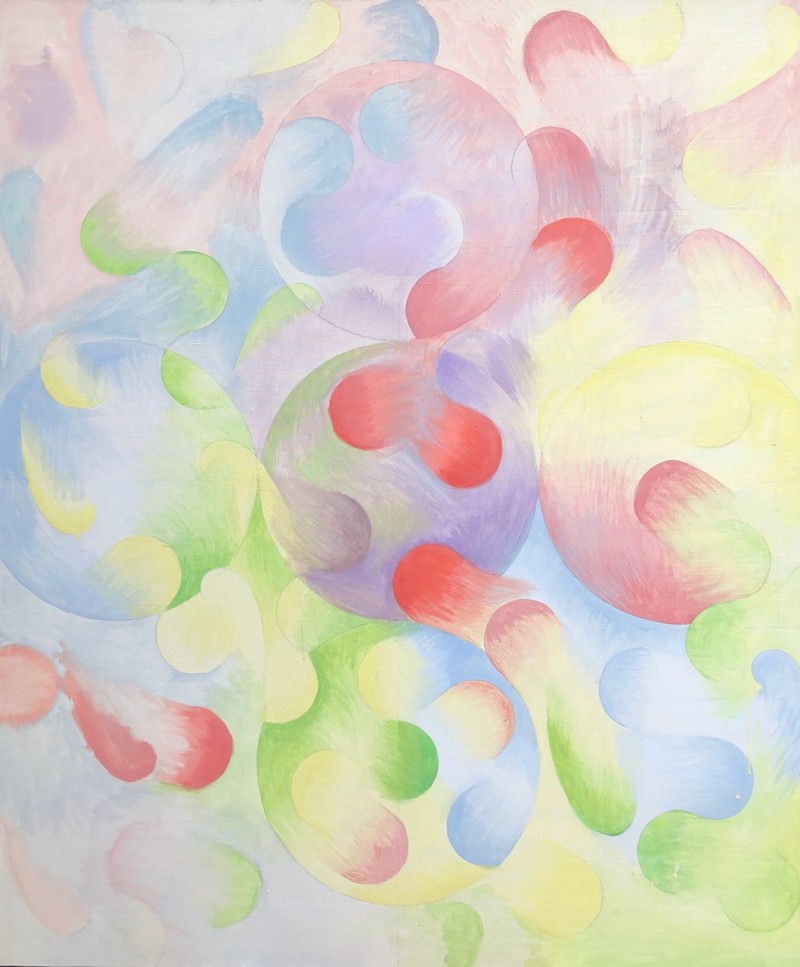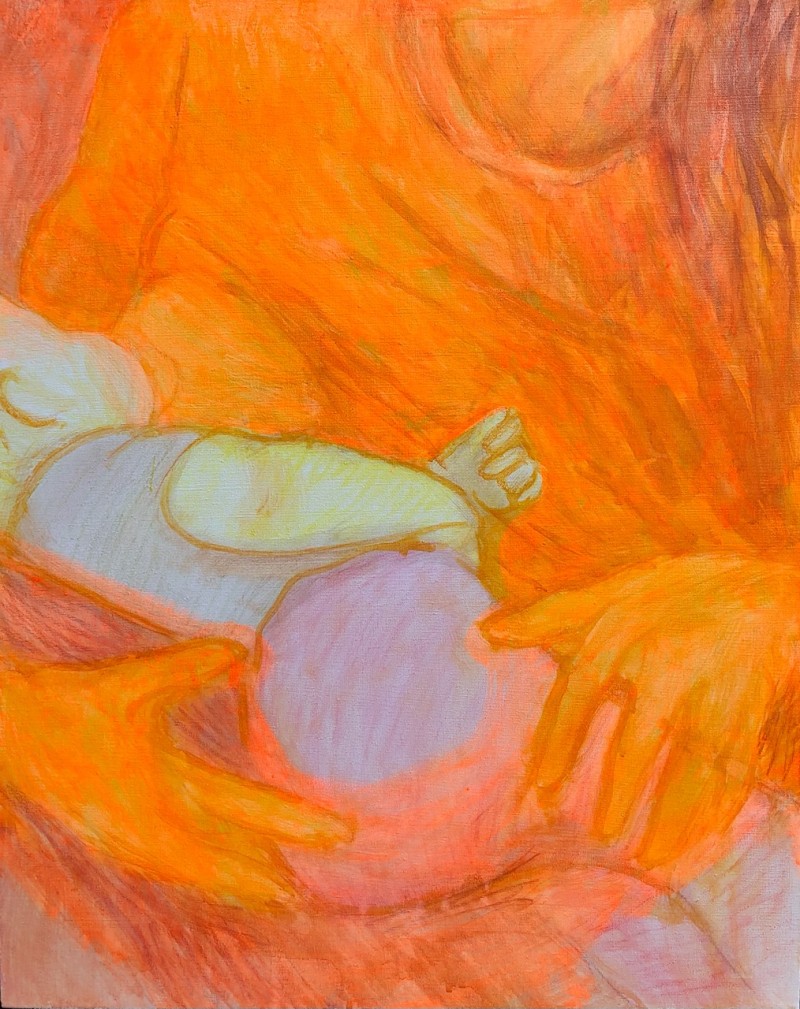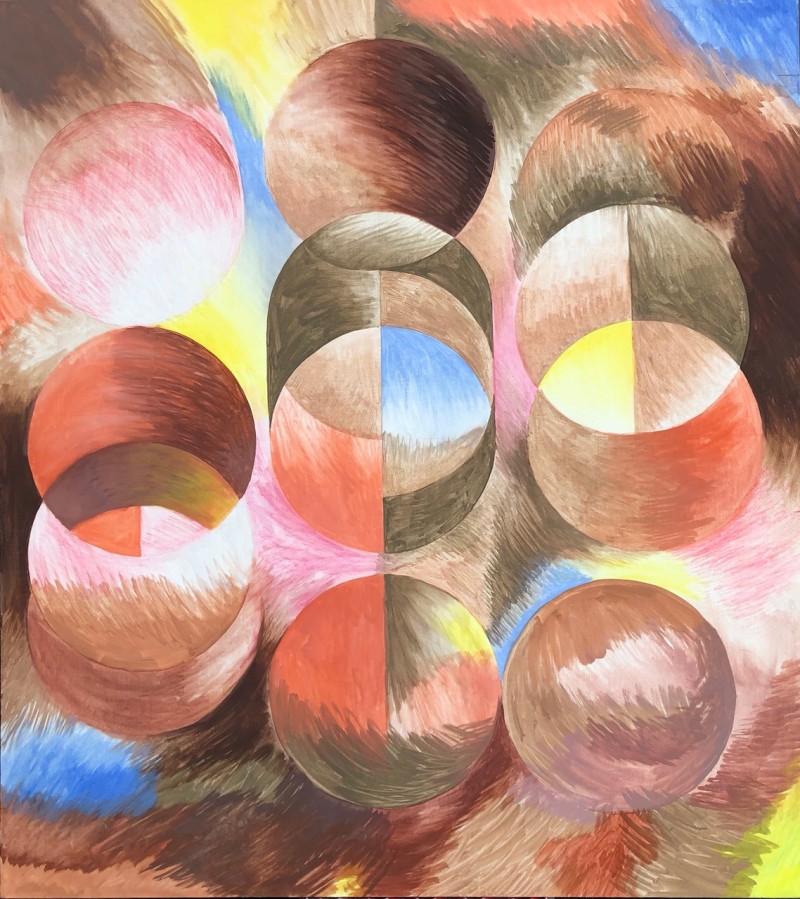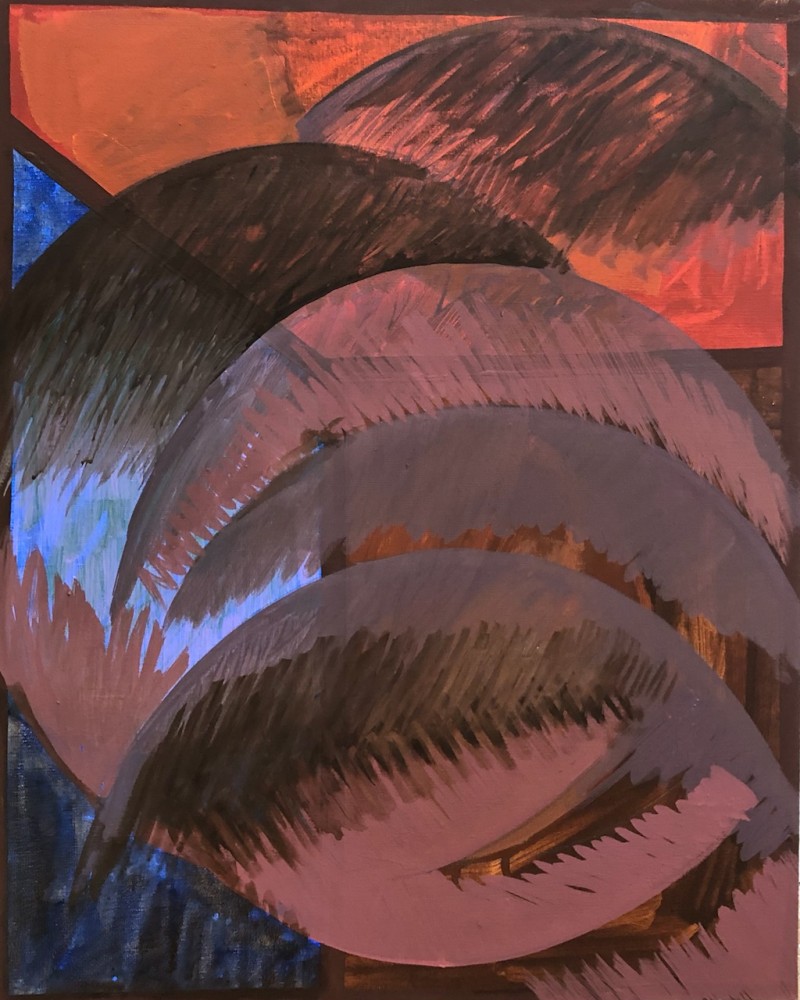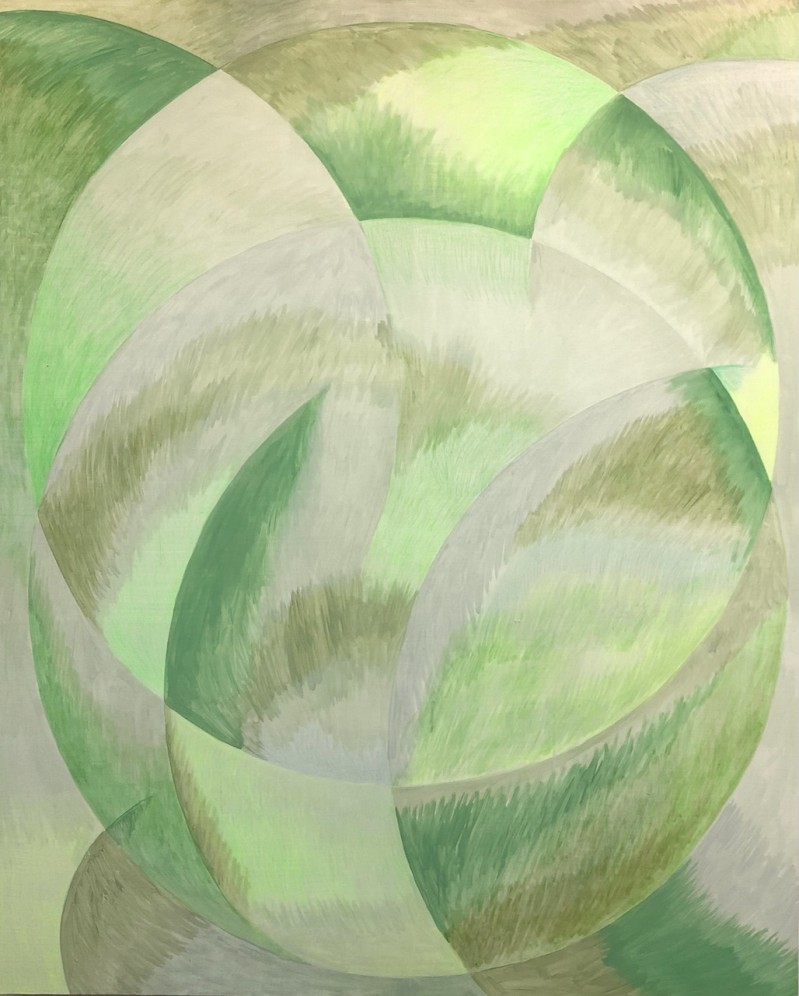Paulina Włostowska
The Green Years
Polana Institute
Stanisława Noakowskiego 16/35
April 12–May 11, 2024
In her experimental novel The Years, Annie Ernaux depicts her life in a manner that is both subjective and impersonal, private and collective. In the mid-60s, she works as a teacher, is married, and has just given birth to a child. She observes that the moments with her family are those in which she feels rather than thinks. She experiences bliss but also harbors a dislike for routine and repetition, despite being tied to them. At times, she reminisces about her past when she was alone, recalling streets, former residences, and the books she read then. She writes: "These are her selves, it seems to her, who continue to exist in these places." She also evokes Dorothea Tanning's painting where a bare-chested woman stands before a row of doors that stand ajar. Her 1965 self sees herself in it. And probably her 2008 self, the moment she completes writing this novel, also sees herself in it.
Paulina Włostowska's exhibition serves as a form of non-verbal exchange – a dialogue with oneself – with both the absent self and the one we've recently become. Even if the former, inevitably, fades away. Or simply retreats – much like if we were matryoshka dolls or a Chinese box. It's a narrative about the experience of motherhood: its fragmentation and duality. It's a conversation with oneself about oneself, as well as the internal dialogue of the artist and mother, abstraction and figuration, emotions and intuitions. In essence, various "selves" intermingle at the exhibition, not only playing out societal roles but also navigating painterly conventions.
In her pregnancy, Maria Jarema, an uncompromising artist and pioneer of abstraction, painted classical still lifes and bourgeois vases with flowers. Sonia Delaunay, even in the midst of childbirth, began sewing an abstract quilt for her son from leftover fabric scraps, thus marking the inception of Orphism. Hilma af Klint, alongside her abstractions that challenged the established canon, also painted a modest gouache piece titled Motherhood – depicting a mother and child enveloped in neon light, floating within a mystical space. Sylvia Plath, following the birth of her daughter, wrote to her mother, expressing that she felt reborn alongside her and would now write with authenticity. However, she did not, at least not straight away. In one of her poems, she identifies with two sisters of Persephone – one of whose infertility serves as a metaphor for creative impotence. Virginia Woolf, who never bore children, explored in her feminist essay A Room of One's Own the challenges of reconciling the traditional roles of mother and wife with that of an artist. Implicit in her words is a fear of sacrificing independence. The notion that pursuing art necessitates sacrificing familial obligations, coupled with the modernist belief in the necessity of sacrifices for art, embodies a patriarchal myth deeply embedded in our social fabric. Elif Shafak, in Black Milk, further explores the experiences of Woolf and other writers and artists, delving into their fears and anxieties and elucidating why she refrained from writing after giving birth, and when she did, she wrote differently.
The phrase "green years" describes the period of adolescence and youth – a time that shapes our emotional memories and serves as an expression of transgression. Uncertainty always accompanies revolution. In The Years, Ernaux isn't so much considering whether she would be happier living a different life, but rather she's attempting to "save something from the time where we will never be again." Instead of using "I," she uses "we" and "oneself" because now it's "her" time to narrate. By "we," she means the "I" that dreamed of inventing a new language in a college dorm room, but also the "I" that is just discovering that it still writes within the same structure – a language that belongs to everyone.
At the exhibition, Paulina Włostowska showcases her paintings and drawings. Most of them are recent, some created during the artist's pregnancy, others in the initial months of her daughter's life. During this period, painting became a soothing ritual for her, characterized by agitated lines, rhythms, repetitive gestures, and fluorescent colors. An integral part of the exhibition is a tapestry – an old piece the artist revisited while pregnant. It's noteworthy that she didn't alter it but added a new fragment. It may evoke Witkacy's art – the titular mother knits tirelessly, grappling with supporting herself and her son, and also because weaving keeps her engaged. The knitting, the sole colorful element in the black-and-white world, shifts hues in each scene. Here, the fabric also functions akin to text, emerging through continuous intertwining and immersion in a spider's web. It not only links "I" and "I" but also two models of female expression: the emancipatory creation of images and the spinning of the female other, permitting interpretation within the framework of patriarchal and indescribable violence. In this regard, drawing from Nancy Miller's seminal text, The Green Years offers another perspective on arachnology, weaving autobiography, politics, and aesthetics, and perpetuating the ongoing narrative of a collective web. After all, we continue to weave it - text: Ania Batko
Selected works
